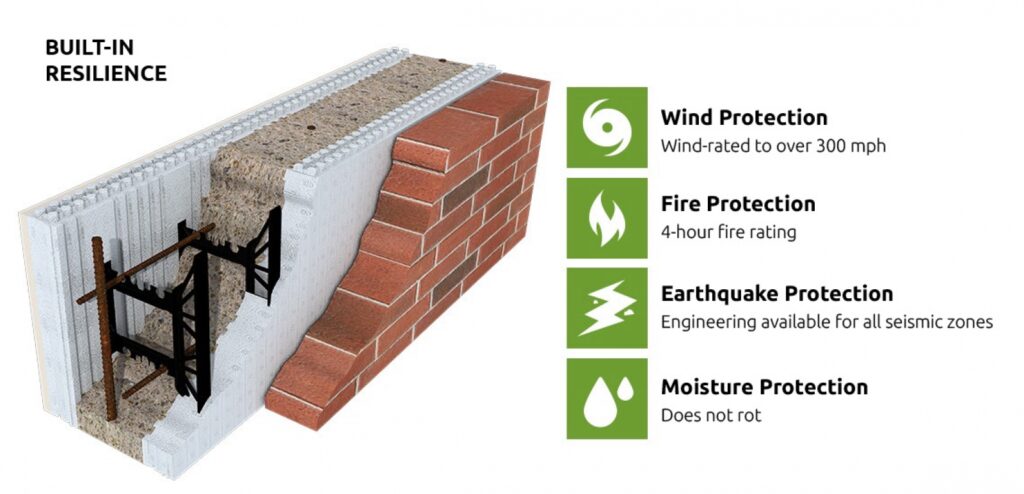As I write this countless brave men and women are fighting wildfires across thousands of acres of California hillsides. The fire has approached within a football field length of the Reagan Presidential Library. While the library and all the cherished memories contained within appear to be safe, the same cannot be said for hundreds of “conventionally built” homes that have fallen victim to the flames. Thousands of residents have been forced to flee with only that which they can carry. For many it is a repeat of what happened during the wildfires of October 2017, only two years ago, that killed 44 people and destroyed thousands of homes. While there is no substance, other than water, that can be truly fireproof, of all construction materials concrete is one of the most resistant to heat and fire. While wood burns and steel softens and melts, concrete can withstand thousands of degrees of heat.

In order to achieve a fire-rating, ICF manufacturers submit their forms to “fire-wall” testing where they are subjected to continuous gas flames and temperatures of up to 2000°F for as long as 4 hours. All of the leading ICF brands took the heat without any sign of weakening. In contrast, wood frame walls typically collapse in an hour or less. Contrary to popular belief, the foam used in ICFs will not burn. It will melt if exposed to high heat, but it will not contribute any fuel to the fire and is ‘no more toxic’ than burning wood. In fact, it is virtually “self-extinguishing,” thanks to a flame retardant all of the leading ICF manufacturers add to the EPS foam.

Whether it is to combat hurricane, fire, earthquake or flood, a solid reinforced concrete ICF constructed building is one of the safest, strongest, and most responsible ways to build while also providing a more comfortable, energy efficient and valuable residence. There is a better way.